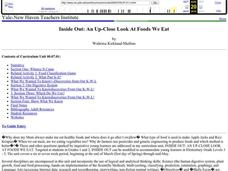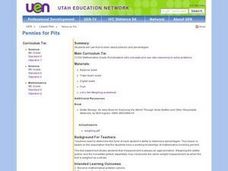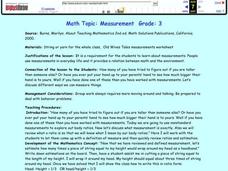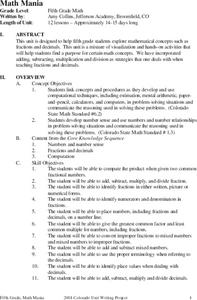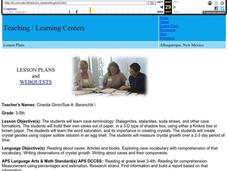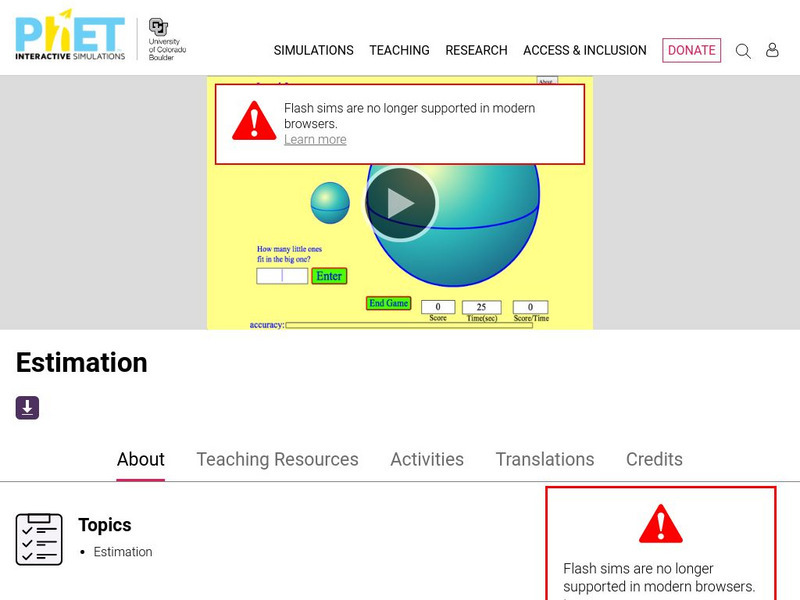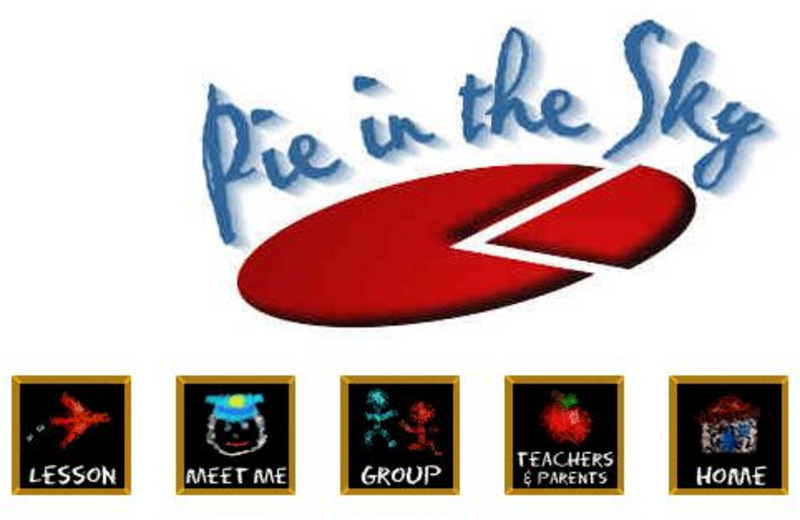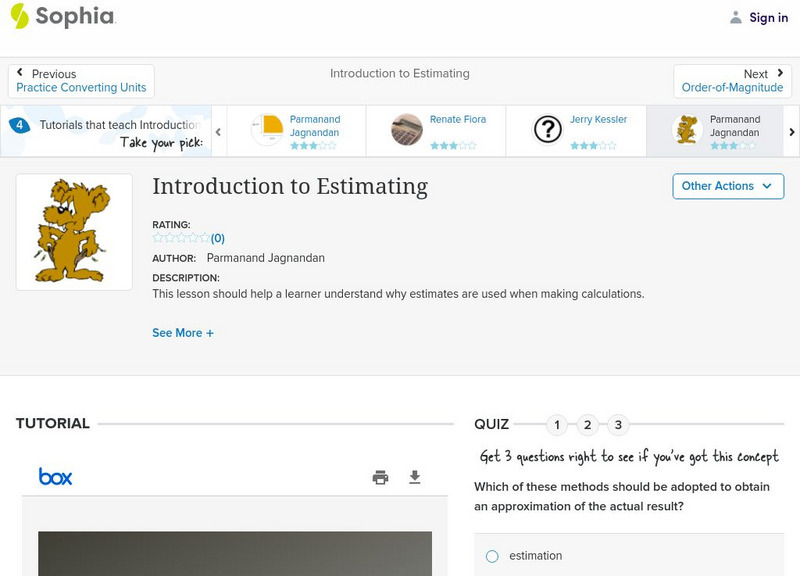Curated OER
Teaching About Simple Machines
Students identify six different simple machines. They investigate the difference between the ideal and actual mechanical advantage. Students calculate the actual mechanical advantage for several simple machines.
Curated OER
Fod Pyramid
Sixth graders investigate the Food Pyramid and how it relates to their own diet. They conduct Internet research, complete the "Rate Your Plate" online activity, and create a HyperStudio presentation.
Curated OER
Inside Out: An Up-Close Look At Foods We Eat
Fourth graders identify the origins of meats and vegetables consumed by humans on a daily basis. They classify foods (meats, dairy products, grains...) and create a food pyramid.
Curated OER
Pumpkin Circuit
Young scholars complete a variety of activities using pumpkins. They visit various stations with various pumpkin activities.
Curated OER
From a Distance
Students think about their neighborhood and get a mental picture of their community. They then interpret aerial photography, learning how to use shapes and patterns to describe urban, suburban and rural communities.
Curated OER
Pennies for Pits
Sixth graders use the edible and nonedible parts of various fruits to determine percentages. Using measurements and appropriate tools are part of the lesson.
Curated OER
Measurements
Third graders brainstorm a list how they use measurements everyday. Using string, they cut a piece long enough as their height and complete ratios using their arms and legs about old tales about measurements. They compare and contrast...
Curated OER
Seasons' Journey : Putting it All Together
Third graders complete a diagram of the revolution of the earth around the sun and write a one paragraph explanation of the factors that cause seasons.
Curated OER
LEGO Balance
Students design and build a balance using LEGO, string, and a set of standard metric weights.
Curated OER
Calculus
Students make an inquiry with the aid of technology into the concept of functions. The emphasis of the lesson is on the interplay between the geometric and analytic information.
Curated OER
Array to Go!
Second graders are introduced to arrays as a means for multiplication readiness. Once students are comfortable with naming the array by counting the columns and rows, they integrate skip counting.
Curated OER
What's Your Wingspan?
Third graders measure each other's wingspan, and record and analyze the data.
Curated OER
Math Mania
Fifth graders review adding, subtracting, multiplication and division of fractions and decimals through a variety of activities and exercises.
Curated OER
Cave Mentality
Pupils identify and define vocabulary associated with caves and rock formations. They construct a cave out of paper and fill it with a geode they crerate. Students write and present orally reports about caves and their importance to our...
University of Colorado
University of Colorado: Ph Et Interactive Simulations: Estimation
Explore size estimation in one, two and three dimensions! Multiple levels of difficulty allow for progressive skill improvement.
University of Colorado
University of Colorado: Ph Et Interactive Simulations: Estimation
Explore size estimation in one, two, and three dimensions! Multiple levels of difficulty allow for progressive skill improvement.
Other
Plane Math: Activities: Pie in the Sky
Students work in groups to investigate weather and estimating cloud cover. The activity explores estimation, spatial sense, fractions, and patterns. The resource consists of a lesson plan, group activity instructions, lesson overview,...
National Council of Teachers of Mathematics
The Math Forum: Exploring Ocean Data Lesson Plan
Find "oceans of data" for students of all ages. NCTM, California, and Philadelphia standards are listed for each grade level along with lesson plans and other website resources.
Texas Instruments
Texas Instruments: Exploring Taylor Series
In this Computer Algebra System (CAS) activity, students explore the Taylor's series. They investigate the approximation of numbers in sequences and series and find their interval of convergence using various methods.
Sophia Learning
Sophia: Introduction to Estimating
A slideshow exploring the importance of using estimating in calculations in life situations and in physics. Understand how estimating in physics can help you see if your calculated answer is correct or not.
Science and Mathematics Initiative for Learning Enhancement (SMILE)
Smile: Lesson: An Introduction to Estimation and Measurements
Pancakes anyone? Students explore estimation and measurement by learning how to make pancakes. A hands-on lesson designed for students in grades 3-5 where students are engage in hand-on experiences involving measuring volume, converting...
PBS
Pbs Kids Afterschool Adventure!: Operation: Animal Measurement Activity Plan
Animal Fun is here! In this week's adventure, Animal Measurement, children will explore measurement with the help of hermit crabs (investigating size correspondence by matching a hermit crab to its appropriate shell), beavers (visual...




